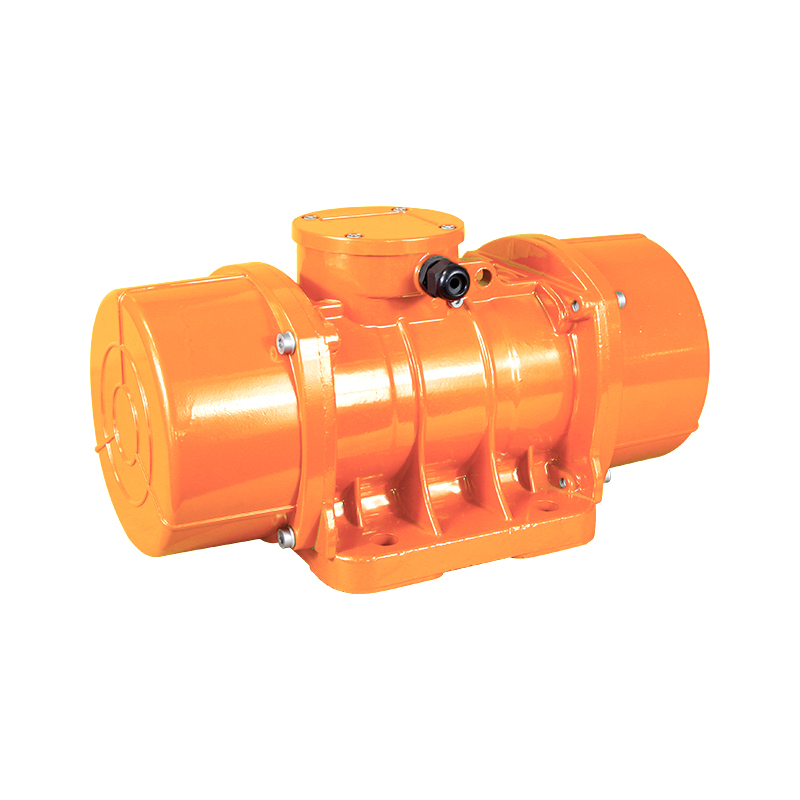In a steel mill the floor trembles—not from the roar of furnaces, but from a compact Electric Vibrator Motor bolted beneath a 40-tonne vibrating feeder. This motor, often no larger than a suitcase, is the invisible muscle that keeps heavy industry moving, sifting, compacting and de-blocking millions of tonnes of bulk material every day. So which design earns the right to run 24/7 in the world’s harshest plants?
1. Two-Pole, Three-Phase, Foot-Mounted Workhorses
The answer is robust, two-pole, three-phase induction motors rated from 0.25 kW to 18.5 kW. Their synchronous speed of 3 000 rpm translates into 50 Hz vibration, ideal for high-frequency screening of iron ore or limestone. Built with cast-iron end shields, Class H insulation and labyrinth seals, they shrug off 60 °C ambient dust without missing a beat. Brands such as OLI, Italvibras and WAM all offer IEC-standard frames that drop straight into existing feeders, making retrofits painless.
2. Explosion-Proof Designs for Hazardous Zones
Refineries and chemical plants demand ATEX-certified, explosion-proof Electric Vibrator Motors. These units encase the windings in thick aluminium or stainless-steel housings that contain any internal spark. The same motor that shakes catalyst inside a reactor can be certified Zone 1 IIC T4, ensuring safety when hydrocarbon vapours are present. Maintenance crews simply change the grease every 2 000 hours instead of dismantling a pneumatic hammer.

3. High-Amplitude, Low-Frequency Giants for Compaction
When concrete or foundry sand needs good amplitude, industry turns to four-pole or even six-pole motors running at 1 500 rpm or 1 000 rpm. The lower speed delivers up to 6 mm peak-to-peak stroke, good for vibrating tables that de-air refractory bricks or settle railway sleepers. Oversized bearings—often 6314 or 6316 series—absorb the constant 8 g acceleration, while adjustable eccentric weights let operators dial in the exact force required, from 1 kN to 100 kN.
4. Energy-Smart, Inverter-Duty Units
Modern plants link every Electric Vibrator Motor to a VFD. By trimming frequency to match load, energy consumption drops up to 30 %. Stainless-steel terminal boxes with IP66 cable glands prevent moisture ingress, and thermistors embedded in the windings feed real-time temperature data to the plant SCADA. When vibration amplitude drifts due to screen blinding, the system automatically boosts torque, keeping throughput constant and avoiding costly shutdowns.
5. Heavy-Duty, Oil-Cooled Series
For harsh duty—think frozen iron ore at −40 °C—oil-cooled vibrator motors circulate dielectric fluid through the stator core. The oil not only cools but also dampens harmonics, extending bearing life beyond 30 000 hours. A single 15 kW unit on a 3-metre grizzly feeder can replace two legacy pneumatic vibrators, cutting air compressor demand by 50 % and freeing 60 kW of plant electricity.
In short, the Electric Vibrator Motor that truly powers heavy industry is not one model but a family of purpose-built machines: foot-mounted induction motors for screening, explosion-proof variants for petrochemicals, low-speed giants for compaction, inverter-ready units for efficiency, and oil-cooled titans for arctic mines. Match the motor to the duty, and even the heaviest process runs as smoothly as the gentle hum beneath a steel mill’s deck plates.

 英语
英语 葡萄牙语
葡萄牙语 西班牙语
西班牙语 русский
русский






 Tel: + 86-576-86320988
Tel: + 86-576-86320988
 Fax: + 86-576-86333217
Fax: + 86-576-86333217
 E-mail:
E-mail:  Add: Dayangcheng Industrial Zone, daxi, wenling, zhejiang, china
Add: Dayangcheng Industrial Zone, daxi, wenling, zhejiang, china
